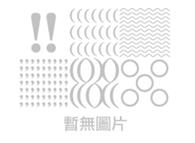
12
0
0
0
0
Theory, formulation and realization of artifacts science : 3M&I-Body system
- 作者: Matsui, Masayuki, author.
- 其他作者:
- 其他題名:
- SpringerBriefs in business.
- 出版: Singapore : Springer Singapore :Imprint: Springer
- 叢書名: SpringerBriefs in business,
- 主題: Business. , Business logistics. , Operations research. , Decision making. , Business mathematics. , Artificial intelligence. , Automatic control. , Robotics. , Mechatronics. , Operations Research/Decision Theory. , Business Process Management. , Game Theory. , Science, multidisciplinary.
- ISBN: 9789811334955 (electronic bk.) 、 9789811334948 (paper)
-
FIND@SFXID:
 CGU
CGU
- 資料類型: 電子書
- 內容註: Introduction to Artifacts Dynamism -- Advanced Artifacts in Science and Economics -- Collaboration Science in the Age of Digitalization -- Matrix Method for Higher 3M&I-Management -- Artifact Dynamism and Duality in Matsui's ME -- Design and Realization for Nature Versus Artifacts Science.
- 摘要註: This book considers and builds on the main propositions regarding body similarity and the principles of nature versus artifacts in science. It also explores the design (matrix) power of the human, Material/Machine, Money & Information (3M&I) body with respect to productivity/gross domestic product (GDP) The book begins in 2009 with Weiner's cybernetics and describes Matsui's theory and dynamism concerning the basic equation of W = ZL and artifact formulation using matrix methods, such as Matsui's matrix equation (Matsui's ME) In his book Fundamentals and Principles of Artifacts Science: 3M&I-Body System, published by Springer in 2016, the author championed the white-box approach for 3M&I artifacts in contrast to Simon's artificial approach from 1969. Two principles, the Sandwich (waist) and Balancing theories, and their fundamental problems, were identified. This book now proposes a third principle: the fractal/harmonic-like structure of the cosmos and life types in space and time. The book further elaborates on the complexity of the 3M&I system and management in terms of enterprises, economics, nature, and other applications. Also, the domain of nature versus artifacts is highlighted, demonstrating the possibility of a white-box cybernetics-type robot. This fosters the realization of humanized and harmonic worlds that combine increased happiness and social productivity in an age increasingly dominated by technology.
-
讀者標籤:
- 系統號: 005449542 | 機讀編目格式
館藏資訊
